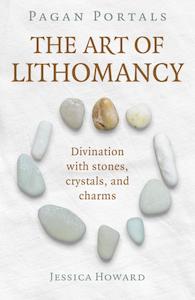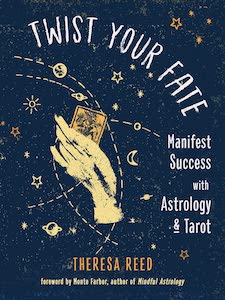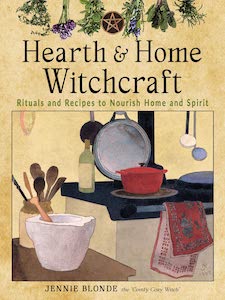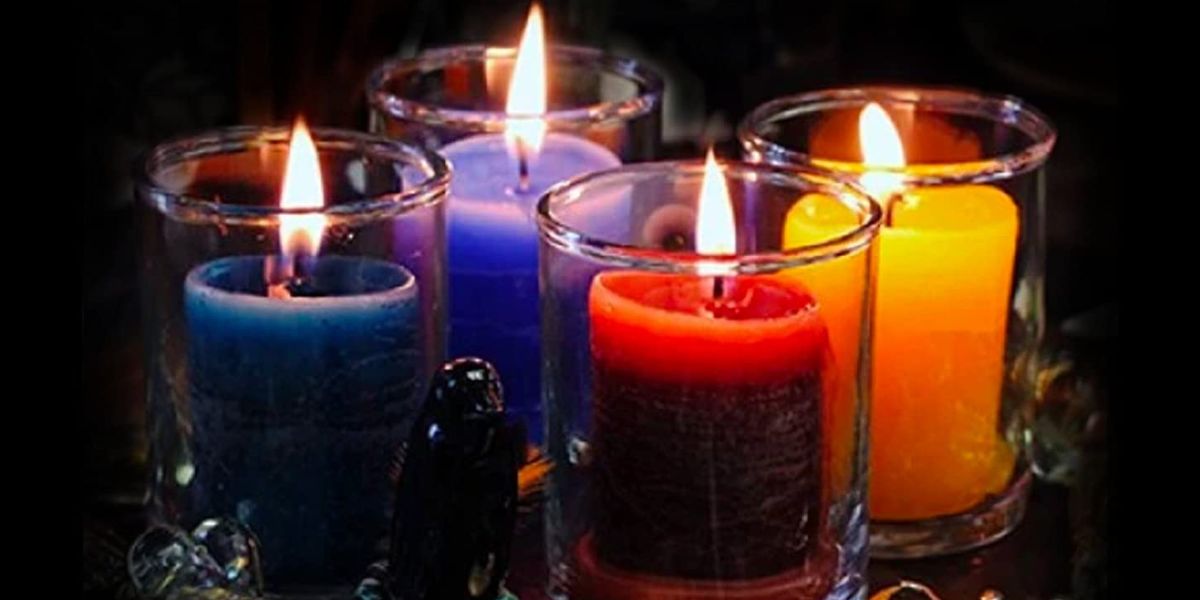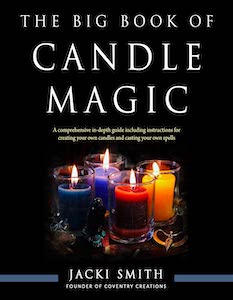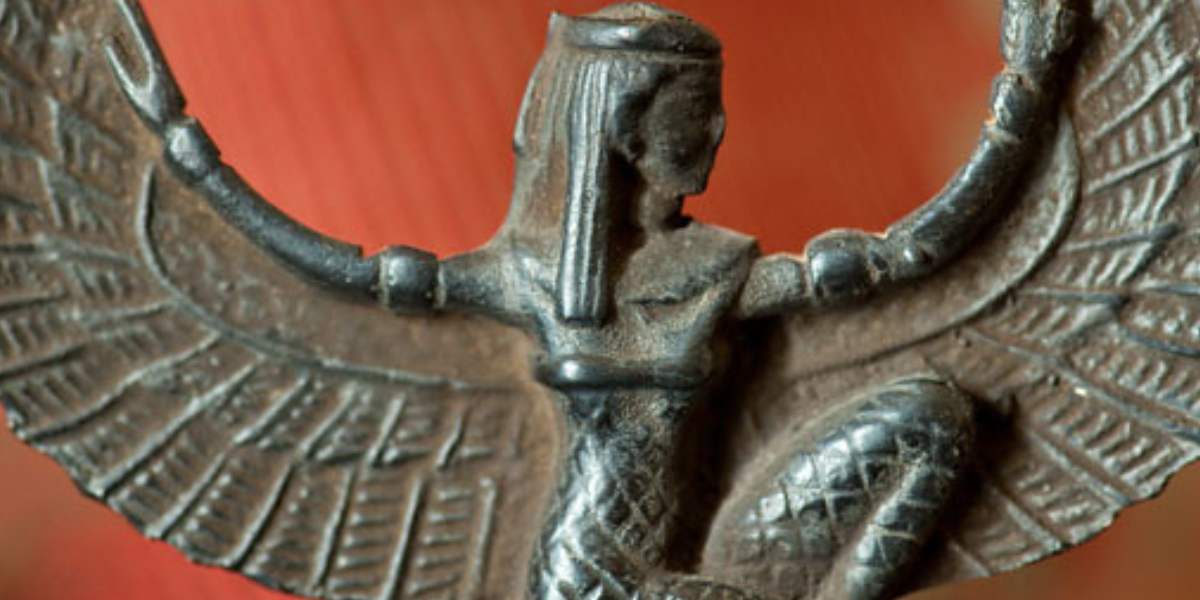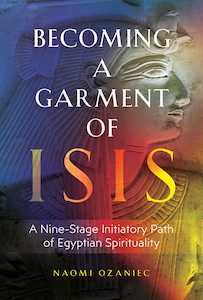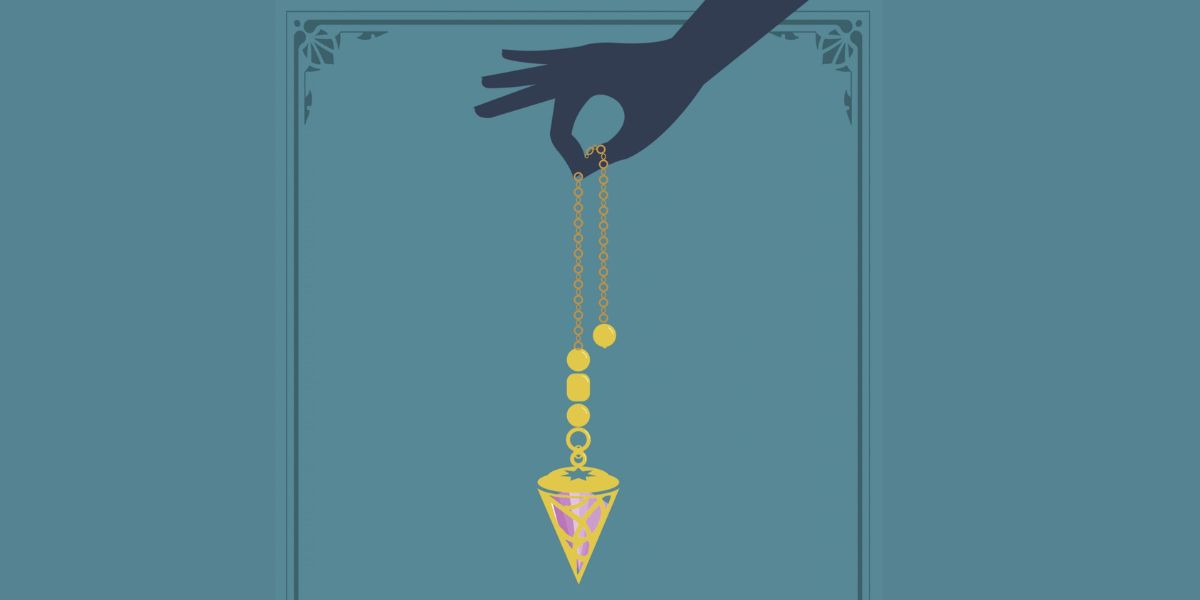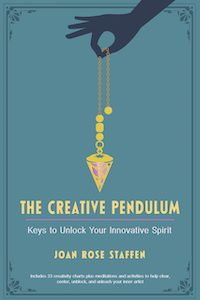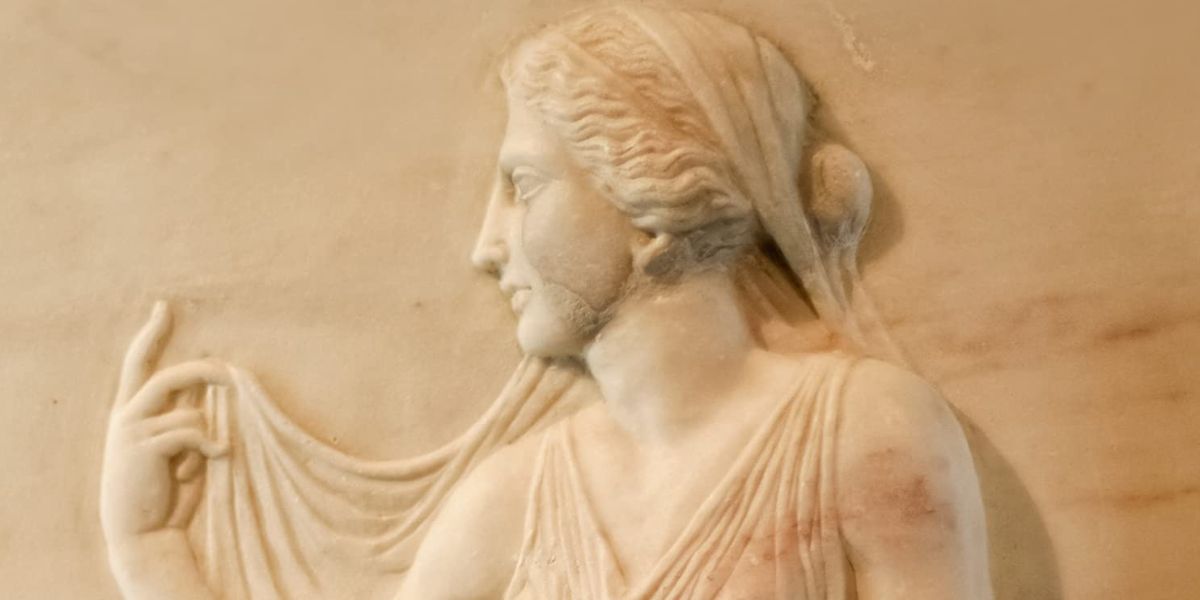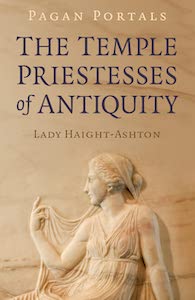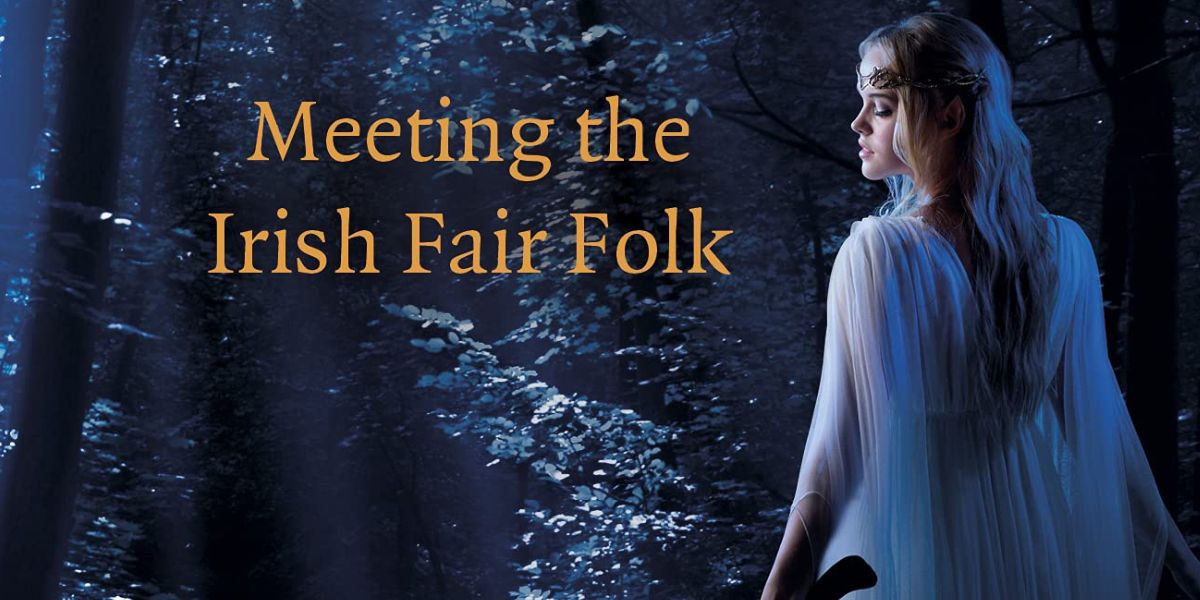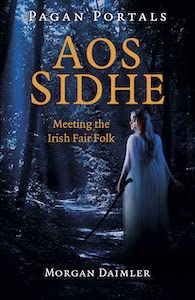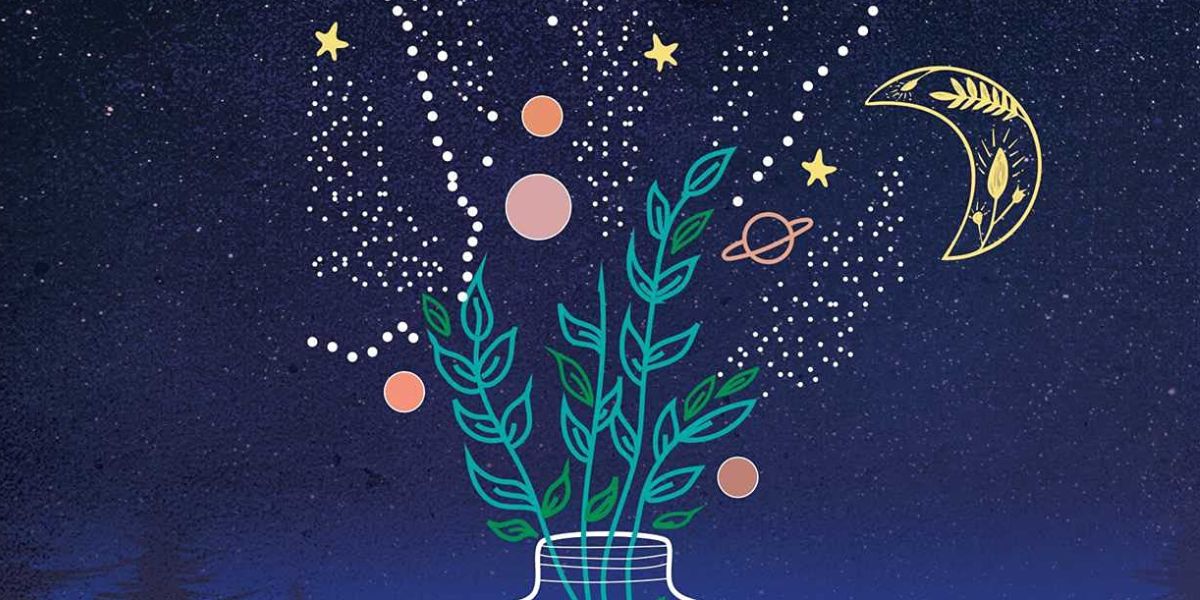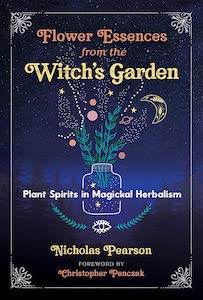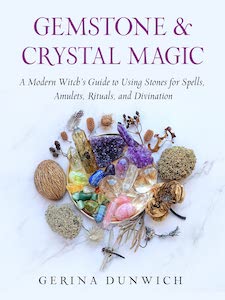
Gemstone and Crystal Magic: A Modern Witch’s Guide to Using Stones for Spells, Amulets, Rituals, and Divination, by Gerina Dunwich
Weiser Books, 1637480075, 256 pages, August 2022
After reading a book on lithomancy recently, I thought it would do me good to brush up on my knowledge of gemstones and crystals. It seemed opportune that I had Gemstone and Crystal Magic: A Modern Witch’s Guide to Using Stones for Spells, Amulets, Rituals, and Divination by Gerina Dunwich sitting on my shelf just when I needed it! Delving into this book has give me tons of insight into the magical properties of gem and crystals, much more than I initially anticipated, to help me discover all the ways I can use the potency of them in my practice. Combining history with personal experience, Dunwich has brought to light all various forms of magical workings one can use gemstones and crystals for, presenting a full-picture of their potential.
What stood out to me the most at first was how this book went well beyond the far too common “New Age” descriptions of crystals and gemstones. Once I started to learn more about Dunwich’s background, the way crystals and gemstones are approached made a lot of sense – she is an astrologer and occult historian! And to me this really makes this book on the topic standout from the rest because there’s so much information woven in from ancient texts and grimoires that situate the discussion in a more historical context, amplifying the timehold traditions and beliefs about different crystals and gemstones.
Dunwich is also a dedicated paranormal researcher, who is clearly very comfortable with the idea of spirits, demons, and curses, which are some topics not shied away from in the book. For instance, she goes into detail about the tragedies surrounding the allegedly cursed Hope Diamond and the paranormal phenomena of lithoboly. This valuable information contained in Gemstone and Crystal Magic that is often overlooked in other books that only superficially cover the topic. For experienced magical practitioners, this book can take your crystal and gemstone to the next level by teaching how to reverse curses, neutralize harmful energy, and use protection magic in combination with healing, spellwork, and manifestation.
Throughout the book many sources are referenced, which gives the reader plenty of avenues to explore if they are inspired. While Dunwich’s personal experience has certainly provided her with knowledge to write this book, the objectiveness in her writing is what really stands out. This isn’t a “how-to” based on Dunwich’s personal practice, but rather a compendium of knowledge she’s collected through research and study. This is a book that is filled with lore, history, anecdotes of magical practitioners, and well-sourced information about the use of crystals and gemstones.
My favorite chapter was “Stones of Zodiac” which had very interesting tables of correspondences that certainly would be useful in magical workings. There was a table of the gemstones associated with the guardian angels associated with each sign, the twelve apostles, animals of the Chinese zodiac, hour of birth, and monthly birthstones according to different traditions (Modern, Traditional, Mystical, Ayurvedic, Hebrew, Arabic, and Roman). Even if you’re not very familiar with astrology, this section could help to connect to your planetary energies through the gemstones.
I was also especially impressed by the six appendices at the end of the book, which includes tables of pagan gods and goddesses and their gemstones, gemstones for the eight sabbats, and gemstones for the parts of the Tree of Life, along with a calendar of daily stones for the entire year and different gemstone correspondences. It is arranged for the reader to easily be able to identify which gemstone they might want to work with depending on the day, time of year, or the deity they are inviting into their practice.
Aside from the resourceful tables of Gemstone and Crystal Magic, Dunwich also features guidance for making one’s own wand or talismans, tons of spells for all sorts of things from dream work to invisibility to love and money, picking a gemstone as an amulet, creating lunar tonic and other elixirs, and cleansing your stones. And this is only a small sampling of everything featured in this book!
One thing I will point out though is this book seems geared towards those with an existing foundation of magical experience. Yet while it’s not “hand-holding”, I wouldn’t shy away from reading it either if you’re a beginner interested in learning how to deepen your magical working through the use of gemstones. Just keep in mind it focuses on the actual magical aspects of gemstones rather than how they can be used for energy enhancement or visual appeal in one’s craft, which is to say it goes deep into the heart of magic, bypassing the more superficial aspects working with gemstones many books focus on now-a-days.
Overall, Gemstone and Crystal Magic is a wonderful go-to reference book for those who are looking to incorporate gemstones into their magical practice. There are so many reasons to connect with gemstones and a variety of ways to do so, all based on what your magical work is calling for at the moment. This book is brimming with magical potency! You can feel the history and folklore is well-bound within these pages wanting to be passed forward and kept alive, which Dunwich has certainly done through her thorough compilation of gemstone knowledge!
Alanna Kali is an astrologer, numerologist, and pioneer spirit that loves to explore life through the lens of depth psychology. She has a passion for studying the humanities and social trends. Her academic work is centered upon reuniting body, mind, and spirit through eco-psychology. She loves reading, spending time in nature, and travel.


